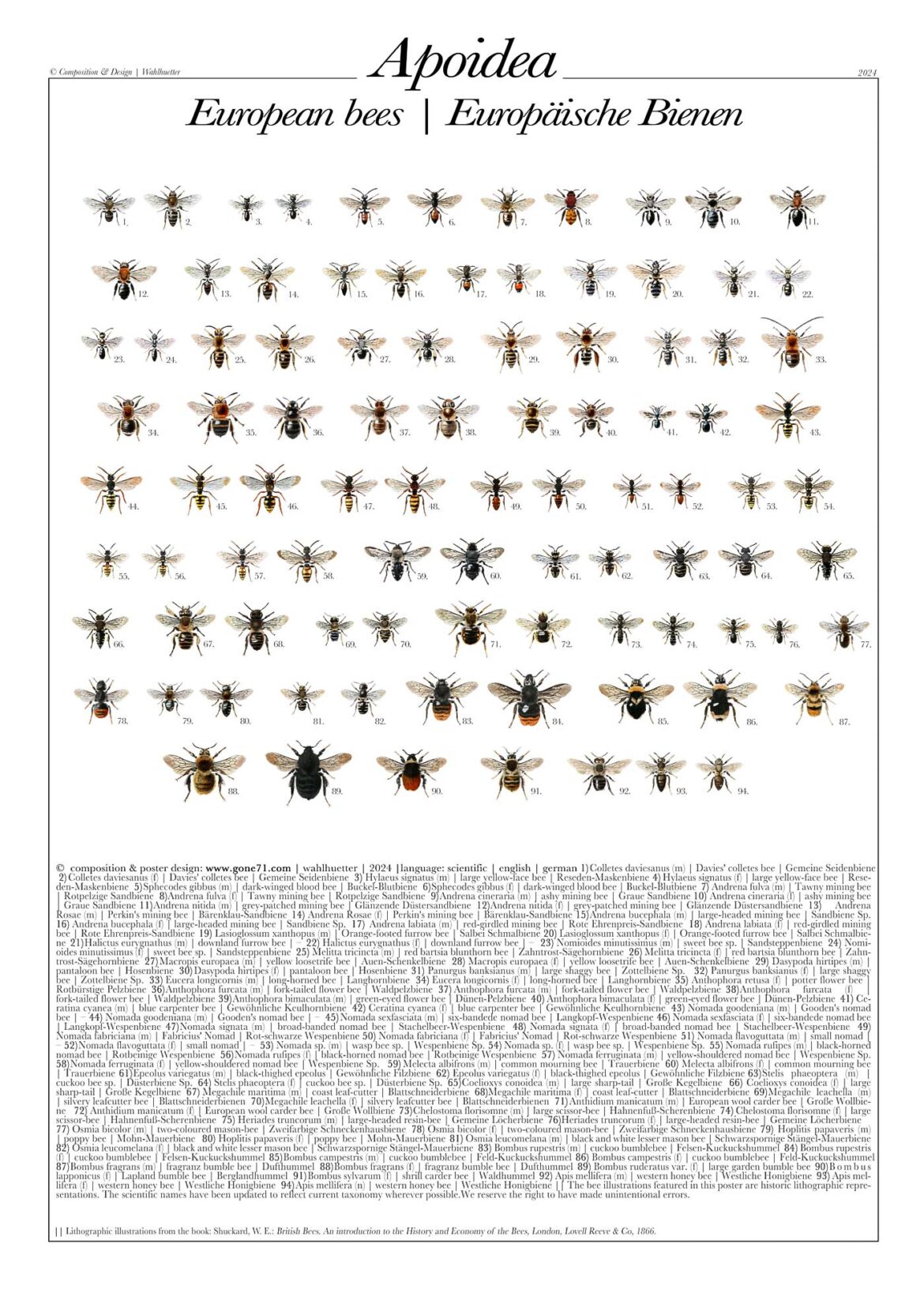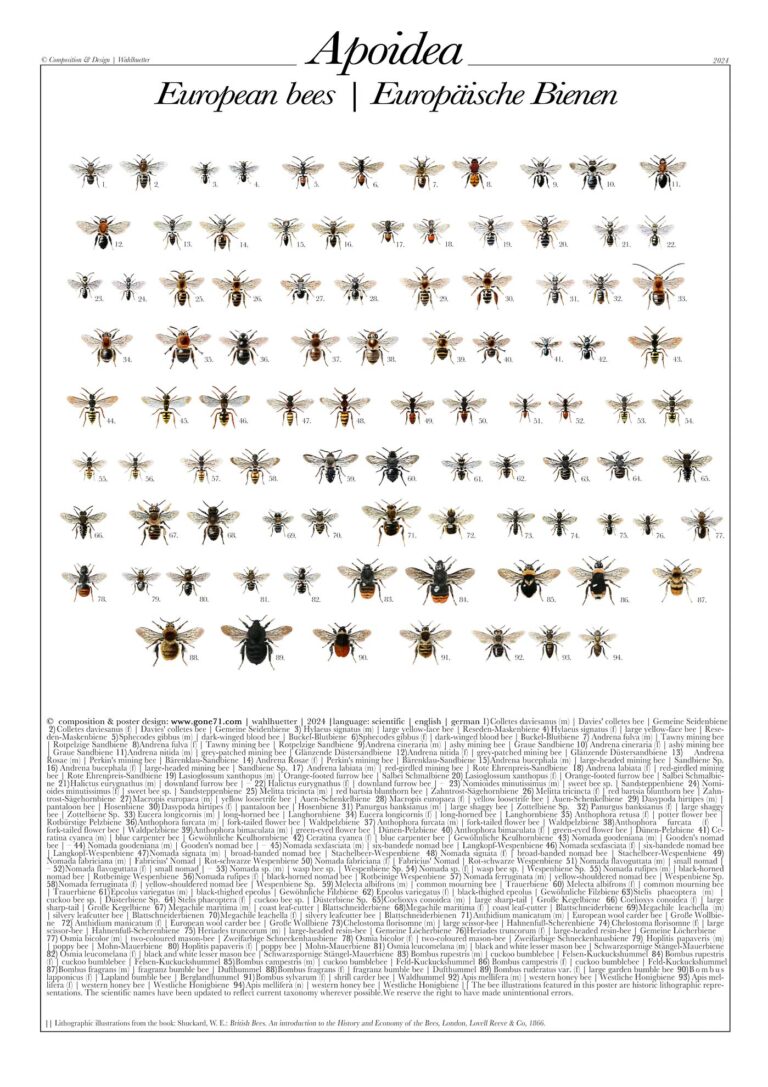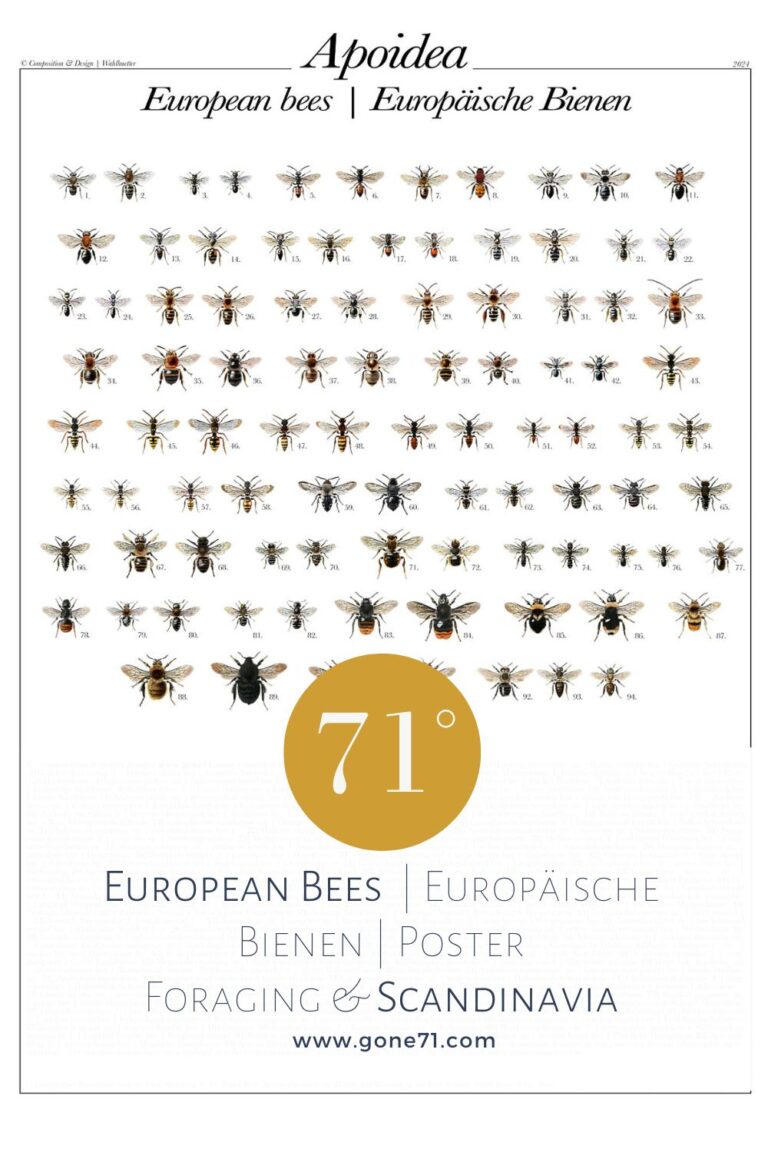Dive into the intricate realm of European bees, meticulously cataloged with their updated scientific, English, and German common names. This poster, optimized for DIN A1 at 300 PPI, offers a meticulous depiction of these essential pollinators, showcasing their diverse species and intricate features.
The world of bees
Bees play a pivotal and multifaceted role in European ecosystems, serving as essential pollinators that facilitate the reproduction of flowering plants and contribute to the maintenance of biodiversity. Within this context, bees have co-evolved intricate adaptations for efficient foraging, characterized by specialized morphological features such as branched hairs that aid in pollen collection. This process, known as pollination, underpins the reproduction of approximately 80% of flowering plants in Europe, including many crops crucial for human food security. Beyond their ecological function, bees also contribute to ecosystem services by supporting wildlife habitats and sustaining the integrity of natural landscapes. However, bees face numerous threats, including habitat loss, pesticide exposure, and climate change, underscoring the urgent need for conservation efforts to safeguard these invaluable pollinators and the ecosystems they support.
European bees | poster details


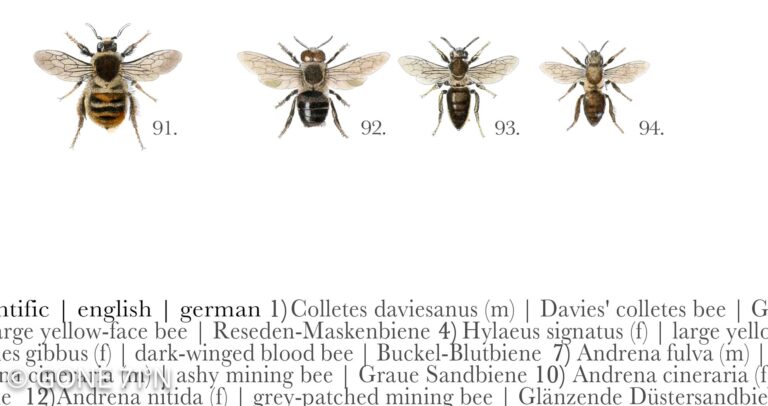
“Digital foraging”
This Apoidea poster is part of our “digital foraging series”, which aims to explore and uncover the vast and untapped world of digital information.
Personally, I perceive the pursuit of historical depictions of marine life, fungi, birds, lepidoptera, wild fruits or other related subjects as digital foraging, entailing extensive searches across scientific databases and centuries-old records.
With an almost limitless array of historic images and resources available online, the possibilities for creative and informative works of art are nearly endless. This wildlife poster is a stunning example of what can be achieved through digital foraging, combining detailed illustrations and accurate scientific information to create a beautiful and educational work of art.
Unfortunately it takes much more than just a quick search to get the results you see here. It takes days of research, technical know-how and a keen eye to find the right images, in the right resolution, and format. And that’s just the beginning. The real work starts with processing, restoring and manipulating the images to create something new and unique. So make no mistake, there are serious hours invested in such an endeavor.
For me, this is what “digital foraging” is all about. The thrill of the hunt, the excitement of discovery and the satisfaction of creating something new and beautiful from what was once forgotten. It’s also a modern take on the traditional art of foraging, and I can’t wait to see what else can be found in the vast depths of the digital world.
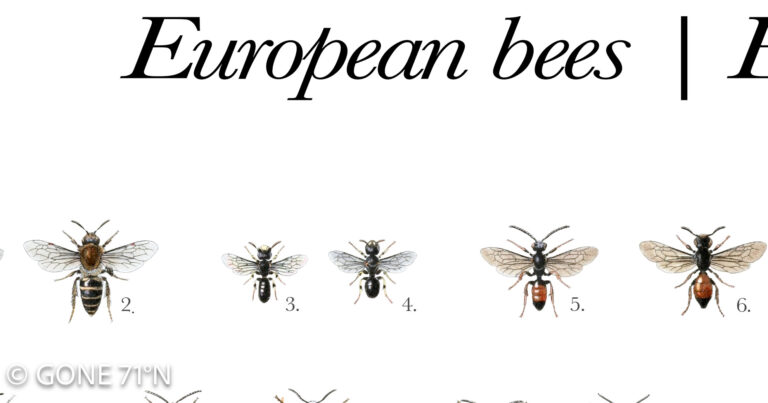
The work behind the scenes
Creating a comprehensive poster featuring over 1000 species of European beetles is a monumental task that demands meticulous attention to detail and extensive labor. Beyond the research and restoration of historic illustrations, each individual beetle must be carefully isolated, adjusted for size and orientation, and strategically placed within the composition. This process of image editing and layout design is incredibly time-consuming, often requiring days and even weeks of dedicated work to ensure the poster achieves both visual coherence and scientific accuracy. Every aspect of the poster, from the selection of beetle species to the final arrangement of illustrations, represents a labor of passion and commitment to showcasing the rich diversity of Coleoptera in a compelling and educational format.
We spent countless hours to research this composition and to carefully restaurate the lithographic images. We hope that you find joy in it if you decide to purchase a copy. You can print it out as is and display it in your living room, kitchen, office or wherever you find it fitting. There are countless options for usage and you can of course always print it in smaller sizes too.
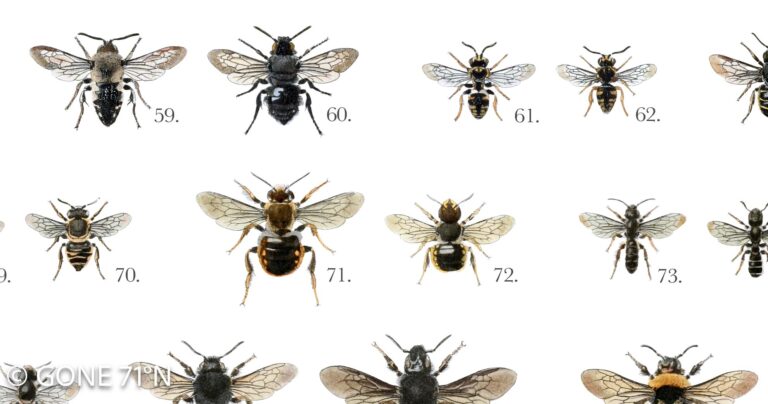
The original bee images
The original drawings are often true works of art that deserve their own place on the wall. Meticulously drawn and presented, you can find a large number of such pictures in historic archives. What photos do today was solved back then with meticulously prepared illustrations. Below are some samples of these original lithographic illustrations as published.
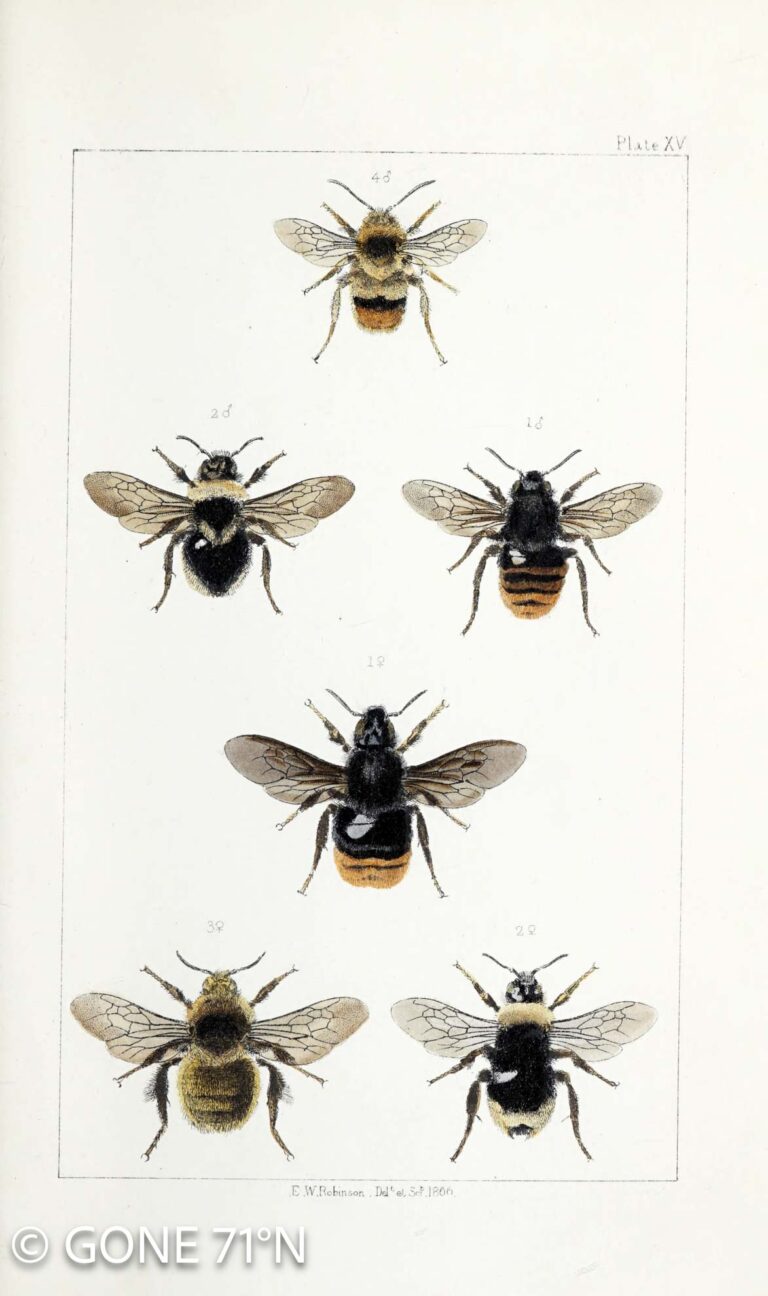
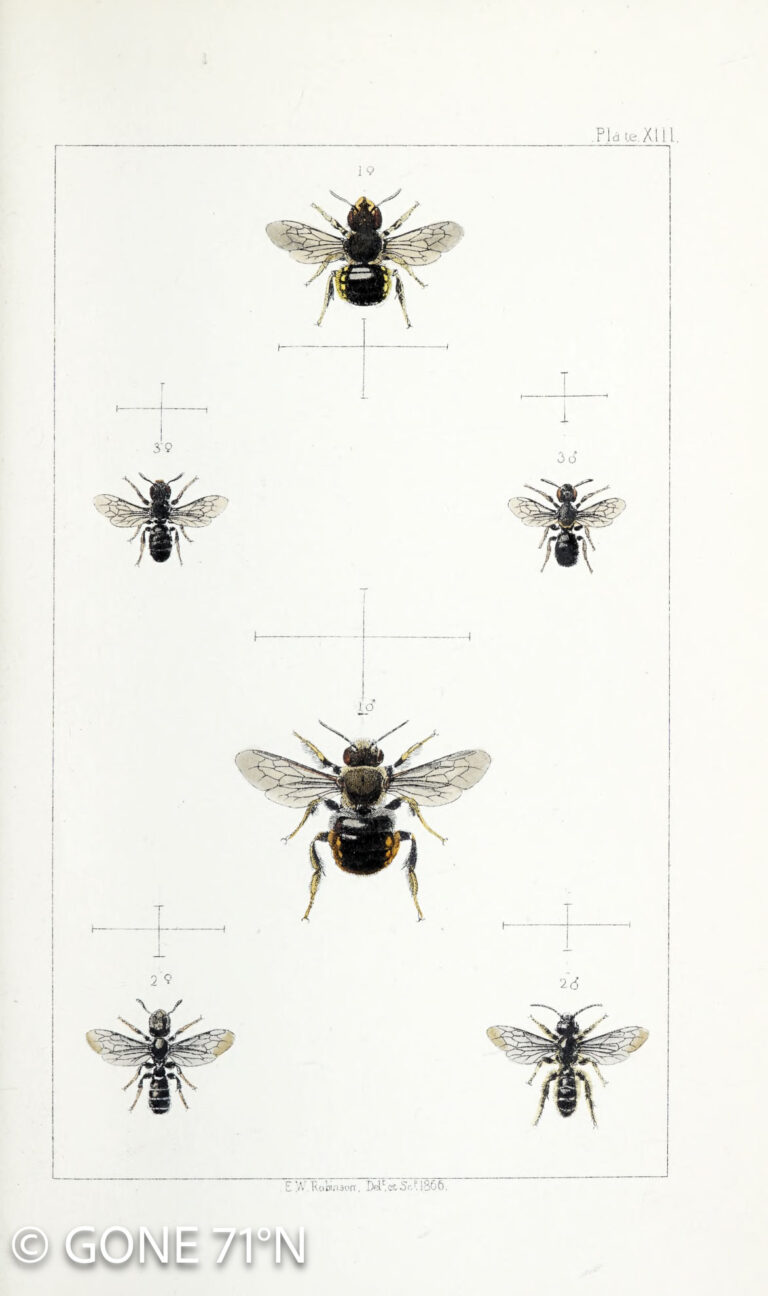
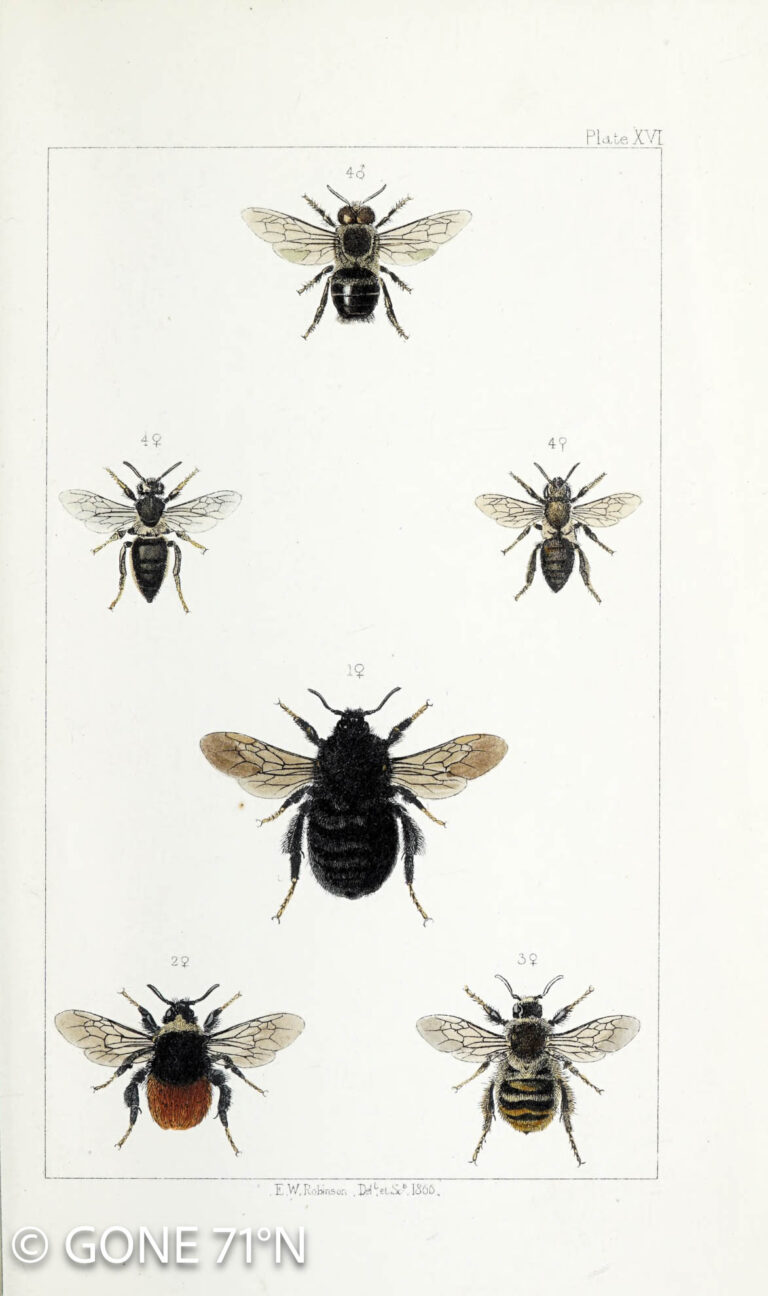
The featured species in this Apoidea poster (part 1)
1) Colletes daviesanus (m) | Davies’ colletes bee | Gemeine Seidenbiene
2) Colletes daviesanus (f) | Davies’ colletes bee | Gemeine Seidenbiene
3) Hylaeus signatus (m) | large yellow-face bee | Reseden-Maskenbiene
4) Hylaeus signatus (f) | large yellow-face bee | Reseden-Maskenbiene
5) Sphecodes gibbus (m) | dark-winged blood bee | Buckel-Blutbiene
6) Sphecodes gibbus (f) | dark-winged blood bee | Buckel-Blutbiene
7) Andrena fulva (m) | Tawny mining bee | Rotpelzige Sandbiene
8) Andrena fulva (f) | Tawny mining bee | Rotpelzige Sandbiene
9) Andrena cineraria (m) | ashy mining bee | Graue Sandbiene
10) Andrena cineraria (f) | ashy mining bee | Graue Sandbiene
11) Andrena nitida (m) | grey-patched mining bee | Glänzende Düstersandbiene
12) Andrena nitida (f) | grey-patched mining bee | Glänzende Düstersandbiene
13) Andrena Rosae (m) | Perkin’s mining bee | Bärenklau-Sandbiene
14) Andrena Rosae (f) | Perkin’s mining bee | Bärenklau-Sandbiene
15) Andrena bucephala (m) | large-headed mining bee | Sandbiene Sp.
16) Andrena bucephala (f) | large-headed mining bee | Sandbiene Sp.
17) Andrena labiata (m) | red-girdled mining bee | Rote Ehrenpreis-Sandbiene
18) Andrena labiata (f) | red-girdled mining bee | Rote Ehrenpreis-Sandbiene
20) Lasioglossum xanthopus (f) | Orange-footed furrow bee | Salbei Schmalbiene
21) Halictus eurygnathus (m) | downland furrow bee | –
22) Halictus eurygnathus (f) | downland furrow bee | –
23) Nomioides minutissimus (m) | sweet bee sp. | Sandsteppenbiene
24) Nomioides minutissimus (f) | sweet bee sp. | Sandsteppenbiene
25) Melitta tricincta (m) | red bartsia blunthorn bee | Zahntrost-Sägehornbiene
26) Melitta tricincta (f) | red bartsia blunthorn bee | Zahntrost-Sägehornbiene
27) Macropis europaea (m) | yellow loosetrife bee | Auen-Schenkelbiene
28) Macropis europaea (f) | yellow loosetrife bee | Auen-Schenkelbiene
29) Dasypoda hirtipes (m) | pantaloon bee | Hosenbiene
30) Dasypoda hirtipes (f) | pantaloon bee | Hosenbiene
31) Panurgus banksianus (m) | large shaggy bee | Zottelbiene Sp.
32) Panurgus banksianus (f) | large shaggy bee | Zottelbiene Sp.
33) Eucera longicornis (m) | long-horned bee | Langhornbiene
34) Eucera longicornis (f) | long-horned bee | Langhornbiene
35) Anthophora retusa (f) | potter flower bee | Rotbürstige Pelzbiene
36) Anthophora furcata (m) | fork-tailed flower bee | Waldpelzbiene
37) Anthophora furcata (m) | fork-tailed flower bee | Waldpelzbiene
38) Anthophora furcata (f) | fork-tailed flower bee | Waldpelzbiene
39) Anthophora bimaculata (m) | green-eyed flower bee | Dünen-Pelzbiene
40) Anthophora bimaculata (f) | green-eyed flower bee | Dünen-Pelzbiene
41) Ceratina cyanea (m) | blue carpenter bee | Gewöhnliche Keulhornbiene
42) Ceratina cyanea (f) | blue carpenter bee | Gewöhnliche Keulhornbiene
43) Nomada goodeniana (m) | Gooden’s nomad bee | –
44) Nomada goodeniana (m) | Gooden’s nomad bee | –
45) Nomada sexfasciata (m) | six-bandede nomad bee | Langkopf-Wespenbiene
The featured species in this Apoidea poster (part 2)
46) Nomada sexfasciata (f) | six-bandede nomad bee | Langkopf-Wespenbiene
47) Nomada signata (m) | broad-banded nomad bee | Stachelbeer-Wespenbiene
48) Nomada signata (f) | broad-banded nomad bee | Stachelbeer-Wespenbiene
49) Nomada fabriciana (m) | Fabricius’ Nomad | Rot-schwarze Wespenbiene
50) Nomada fabriciana (f) | Fabricius’ Nomad | Rot-schwarze Wespenbiene
51) Nomada flavoguttata (m) | small nomad | –
52) Nomada flavoguttata (f) | small nomad | –
53) Nomada sp. (m) | wasp bee sp. | Wespenbiene Sp.
54) Nomada sp. (f) | wasp bee sp. | Wespenbiene Sp.
55) Nomada rufipes (m) | black-horned nomad bee | Rotbeinige Wespenbiene
56) Nomada rufipes (f) | black-horned nomad bee | Rotbeinige Wespenbiene
57) Nomada ferruginata (m) | yellow-shouldered nomad bee | Wespenbiene Sp.
58) Nomada ferruginata (f) | yellow-shouldered nomad bee | Wespenbiene Sp.
59) Melecta albifrons (m) | common mourning bee | Trauerbiene
60) Melecta albifrons (f) | common mourning bee | Trauerbiene
61) Epeolus variegatus (m) | black-thighed epeolus | Gewöhnliche Filzbiene
62) Epeolus variegatus (f) | black-thighed epeolus | Gewöhnliche Filzbiene
63) Stelis phaeoptera (m) | cuckoo bee sp. | Düsterbiene Sp.
64) Stelis phaeoptera (f) | cuckoo bee sp. | Düsterbiene Sp.
65) Coelioxys conoidea (m) | large sharp-tail | Große Kegelbiene
66) Coelioxys conoidea (f) | large sharp-tail | Große Kegelbiene
67) Megachile maritima (m) | coast leaf-cutter | Blattschneiderbiene
68) Megachile maritima (f) | coast leaf-cutter | Blattschneiderbiene
69) Megachile leachella (m) | silvery leafcutter bee | Blattschneiderbienen
70) Megachile leachella (f) | silvery leafcutter bee | Blattschneiderbienen
71) Anthidium manicatum (m) | European wool carder bee | Große Wollbiene
72) Anthidium manicatum (f) | European wool carder bee | Große Wollbiene
73) Chelostoma florisomne (m) | large scissor-bee | Hahnenfuß-Scherenbiene
74) Chelostoma florisomne (f) | large scissor-bee | Hahnenfuß-Scherenbiene
75) Heriades truncorum (m) | large-headed resin-bee | Gemeine Löcherbiene
76) Heriades truncorum (f) | large-headed resin-bee | Gemeine Löcherbiene
77) Osmia bicolor (m) | two-coloured mason-bee | Zweifarbige Schneckenhausbiene
78) Osmia bicolor (f) | two-coloured mason-bee | Zweifarbige Schneckenhausbiene
79) Hoplitis papaveris (m) | poppy bee | Mohn-Mauerbiene
80) Hoplitis papaveris (f) | poppy bee | Mohn-Mauerbiene
81) Osmia leucomelana (m) | black and white lesser mason bee | Schwarzspornige Stängel-Mauerbiene
82) Osmia leucomelana (f) | black and white lesser mason bee | Schwarzspornige Stängel-Mauerbiene
83) Bombus rupestris (m) | cuckoo bumblebee | Felsen-Kuckuckshummel
84) Bombus rupestris (f) | cuckoo bumblebee | Felsen-Kuckuckshummel
85) Bombus campestris (m) | cuckoo bumblebee | Feld-Kuckuckshummel
86) Bombus campestris (f) | cuckoo bumblebee | Feld-Kuckuckshummel
87) Bombus fragrans (m) | fragranz bumble bee | Dufthummel
88) Bombus fragrans (f) | fragranz bumble bee | Dufthummel
89) Bombus ruderatus var. (f) | large garden bumble bee
90) Bombus lapponicus (f) | Lapland bumble bee | Berglandhummel
91) Bombus sylvarum (f) | shrill carder bee | Waldhummel
92) Apis mellifera (m) | western honey bee | Westliche Honigbiene
93) Apis mellifera (f) | western honey bee | Westliche Honigbiene
94) Apis mellifera (n) | western honey bee | Westliche Honigbiene
Find some inspiration here
↓↓↓

